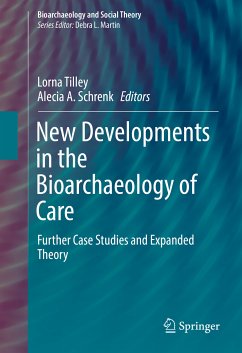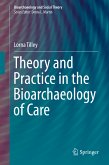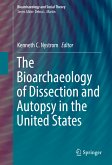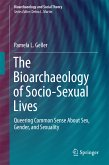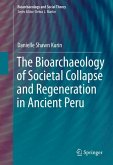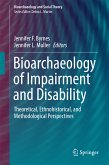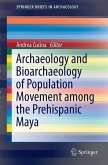Dieser Download kann aus rechtlichen Gründen nur mit Rechnungsadresse in A, B, BG, CY, CZ, D, DK, EW, E, FIN, F, GR, HR, H, IRL, I, LT, L, LR, M, NL, PL, P, R, S, SLO, SK ausgeliefert werden.
"This edited volume demonstrates a maturing of the bioarchaeology of care paradigm, highlighting nuanced, careful theorizing and new avenues of exploration. ... these chapters demonstrate that when this perspective is applied cross-culturally, bioarchaeologists will bring a critical, self-reflexive approach to the analysis and interpretation of results, thereby deepening the intellectual rigor and the value of this paradigm. This edited volume claims a space for this approach in bioarchaeology, and it is awelcome addition to the literature on this topic." (Gwen Robbins Schug, Journal of Anthropological Research, Vol. 74 (3), 2018)
"Perhaps the most interesting bioarchaeological session to come out of a recent Society for American Archaeology conference symposium has now been published as an edited volume. ... the collection lays bare the methodology behind the case studies in a way that encourages other researchers to employ it as well. ... this volume represents an extremely successful collection of essays that should be on any archaeologist's bookshelf." (Kristina Killgrove, American Antiquity, Vol. 83 (2), 2018)
"I found this book to be a wonderful contribution to not only paleopathology, but the broader discipline of bioarchaeology and anthropology. It offers new depth to the bioarchaeology of care by providing diverse case studies ... . It examines case studies from across the globe and addresses groups that bioarchaeologists often find challenging. ... Tilley and A. Schrenk's volume is well-organized and effectively contributes to and expands on the bioarchaeology of care." (Carlina de la Cova, International Journal of Paleopathology, Vol. 17, 2017)
"This book, with its range of chapters, wealth of evidence and the Index of Care material, sits well beyond the obvious archaeological/biological readership ... . this is an important and timely addition to the literature on the individual in prehistoric and early historic societies. Many new approaches and techniques are being deployed to illuminate the human past through the remains of the actors themselves. ... Here is a volume that clearly documents the relevance of this approach to the past." (Beatrice Hale, Ageing & Society, Vol. 37, 2017)
"The 19 chapters cover topics including the explanation of the 'bioarchaeology of care' approach, case studies ofcare from different parts of the world and over time, and new theoretical developments in the field and the ethical dimensions of such research. ... will be required reading for any academic or postgraduate in the field." (Siân E. Halcrow, Antiquity, Vol. 91 (358), August, 2017)

